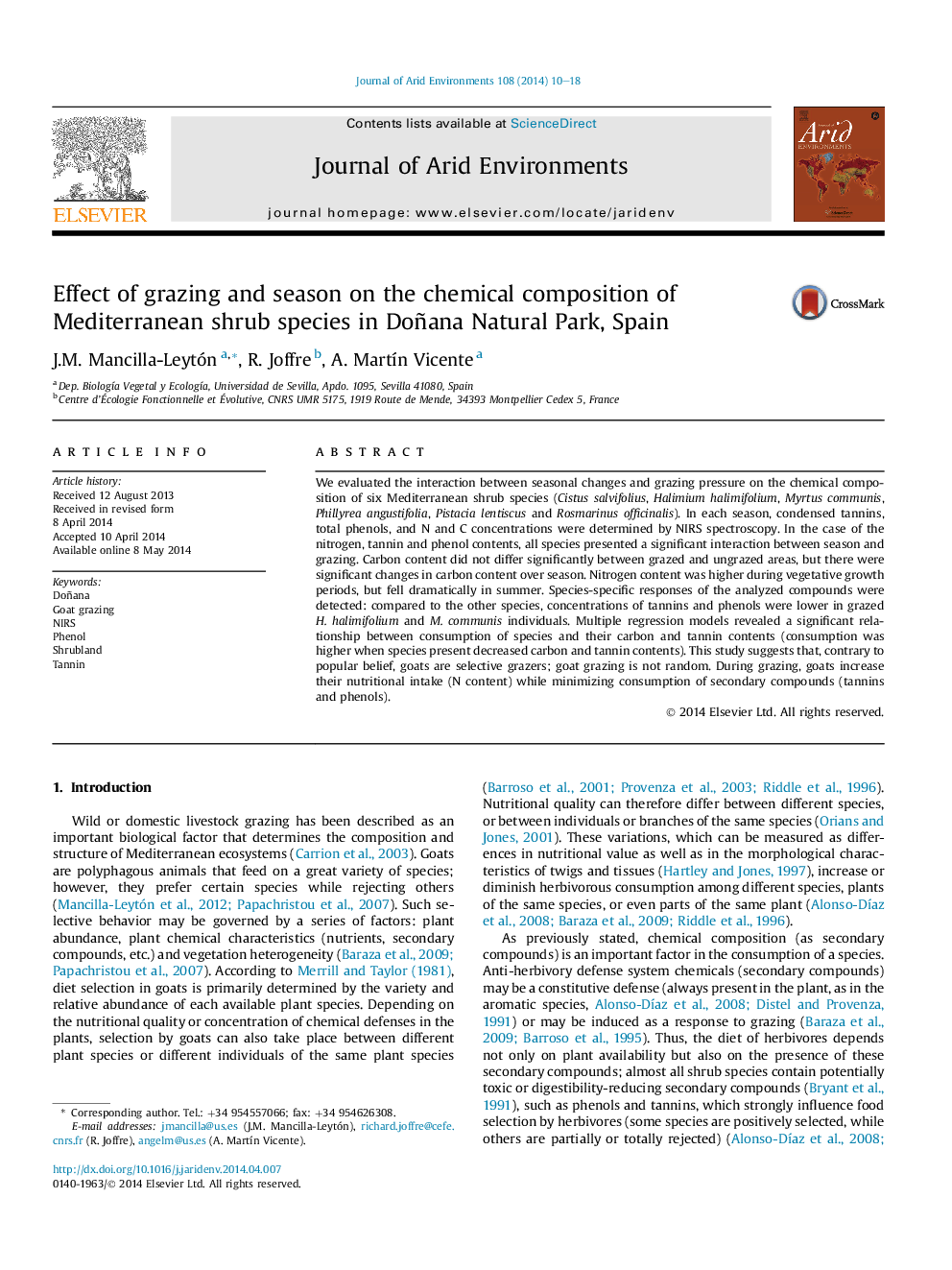| کد مقاله | کد نشریه | سال انتشار | مقاله انگلیسی | نسخه تمام متن |
|---|---|---|---|---|
| 4392963 | 1618250 | 2014 | 9 صفحه PDF | دانلود رایگان |

• Seasonal changes and grazing pressure effect on chemical composition in shrub.
• Goats avoided shrub with low nutrient contents or high secondary metabolites.
• Goat grazing is not random; goats are selective grazers.
We evaluated the interaction between seasonal changes and grazing pressure on the chemical composition of six Mediterranean shrub species (Cistus salvifolius, Halimium halimifolium, Myrtus communis, Phillyrea angustifolia, Pistacia lentiscus and Rosmarinus officinalis). In each season, condensed tannins, total phenols, and N and C concentrations were determined by NIRS spectroscopy. In the case of the nitrogen, tannin and phenol contents, all species presented a significant interaction between season and grazing. Carbon content did not differ significantly between grazed and ungrazed areas, but there were significant changes in carbon content over season. Nitrogen content was higher during vegetative growth periods, but fell dramatically in summer. Species-specific responses of the analyzed compounds were detected: compared to the other species, concentrations of tannins and phenols were lower in grazed H. halimifolium and M. communis individuals. Multiple regression models revealed a significant relationship between consumption of species and their carbon and tannin contents (consumption was higher when species present decreased carbon and tannin contents). This study suggests that, contrary to popular belief, goats are selective grazers; goat grazing is not random. During grazing, goats increase their nutritional intake (N content) while minimizing consumption of secondary compounds (tannins and phenols).
Journal: Journal of Arid Environments - Volume 108, September 2014, Pages 10–18